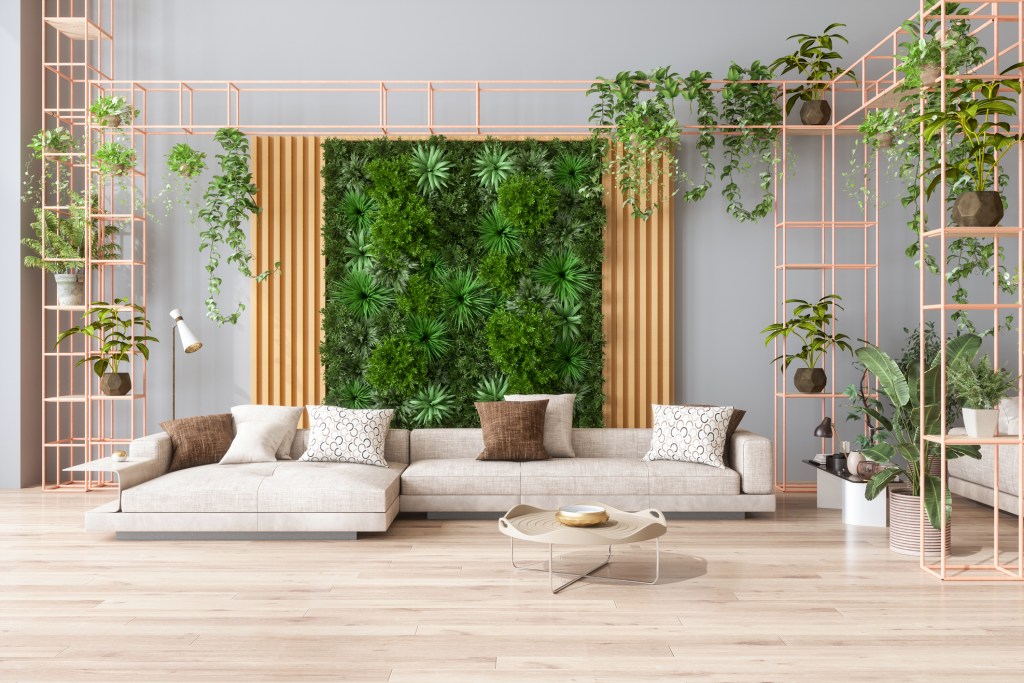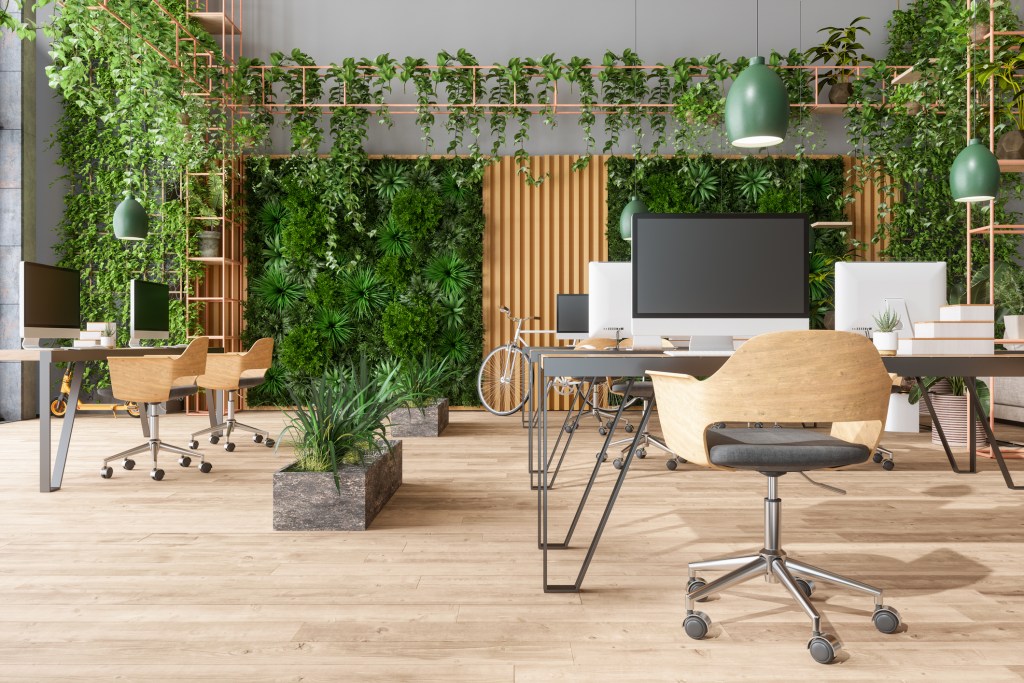A living wall garden is one of the most striking and aesthetically pleasing ways to incorporate greenery into a building’s design. You may have even passed one at some point—as its name implies, it’s basically a garden that’s incorporated onto building walls. So, what exactly are the benefits of this creative marriage between landscaping and architecture? Keep reading to learn all about what a living wall garden is and how it can improve your space!

A living wall garden, green wall, or vertical garden, is essentially a wall covered with living plants. The foliage can be grown in soil or another type of medium. The watering method usually isn’t your conventional pouring water into soil technique; these structures often take advantage of methods such as hydroponics or drip systems. You can find them either inside or outside of a building—they’re often designed to add a welcome pop of green to urban areas where it’s harder to access nature.
So what exactly are their advantages? Here are a few of our favorites.
Purifies the air
Plants, as you may already know, can help remove carbon dioxide and produce oxygen, so a wall plastered with foliage can certainly improve your home’s air quality. They can also help with removing toxins in the air, including formaldehyde, benzene, xylene, toluene, and trichloroethylene. Some plants help eliminate fecal matter, mold spores, and acetone vapors in the air as well.
Helps you make use of limited space
A living wall is essentially vertical wall gardening, which means that you stack plants instead of laying them out horizontally on a table. Instead of adding cases and stands, grow plants from the walls of your home—you can incorporate shelves into your vertical garden if you’d like. Setting up a wall garden takes some work, but it will help you maximize your available space if you live in a small house or apartment.
Adds functional art
Art doesn’t have to be limited to stagnant paintings and illustrations. Adding plants to your wall instantly turns your space into a living art gallery. It’s art that you can alter and watch grow. While most art is stationary for observation, it’s perfectly okay to prune and touch this kind of art. The beauty lies in both foliage that grows and dies—that’s life! You can even try growing herbs on your wall; wall-hanging herb garden is as functional as it gets!

Reduces stress levels
Plants help with curbing and reducing stress as they purify the air. There’s also the fact that gardening itself is a therapeutic hobby! For your living wall garden, consider adding stress-busting foliage such as English ivy and snake plants to make your home a soothing and relaxing space. A living wall garden will definitely help take the edge off of working from a home office.
Improves the acoustics of a room
If you have a room that creates a notable echo, wall plants will absorb and muffle the sound. With a living wall garden, you can have a space that isn’t noisy and distracting.
Regulates temperature
A living wall garden can help regulate your home temperature. Especially when it’s placed on the exterior of a building, it can protect your home from solar radiation during hot summer days and keep warm air from leaving it during cold winter days. As a bonus benefit, this temperature regulation brings down your air conditioning and heating bills while saving energy. A living wall garden is a win-win-win: It’s temperature regulating, economical, and eco-friendly!
Lifts your mood
If you spend most of your days in your home office, a living wall can be a mood booster and add greenery indoors. Bringing greenery indoors can help not only reduce mental distress but also improve concentration and attention.
A few houseplants on your desk can be a welcome reprieve from the hustle and bustle of everyday life, but if you’re committed to infusing your home with greenery, consider installing a garden wall. There’s the aesthetic benefit: You’ll have living, breathing, dynamic art right inside of your home. Green walls also help with practical aspects of your home, as they help improve acoustics, regulate temperature, and save space—on top of purifying the air! And, of course, a vertical garden in the form of a living wall will help boost your mood so that you’re happier and healthier on a day-to-day basis.



